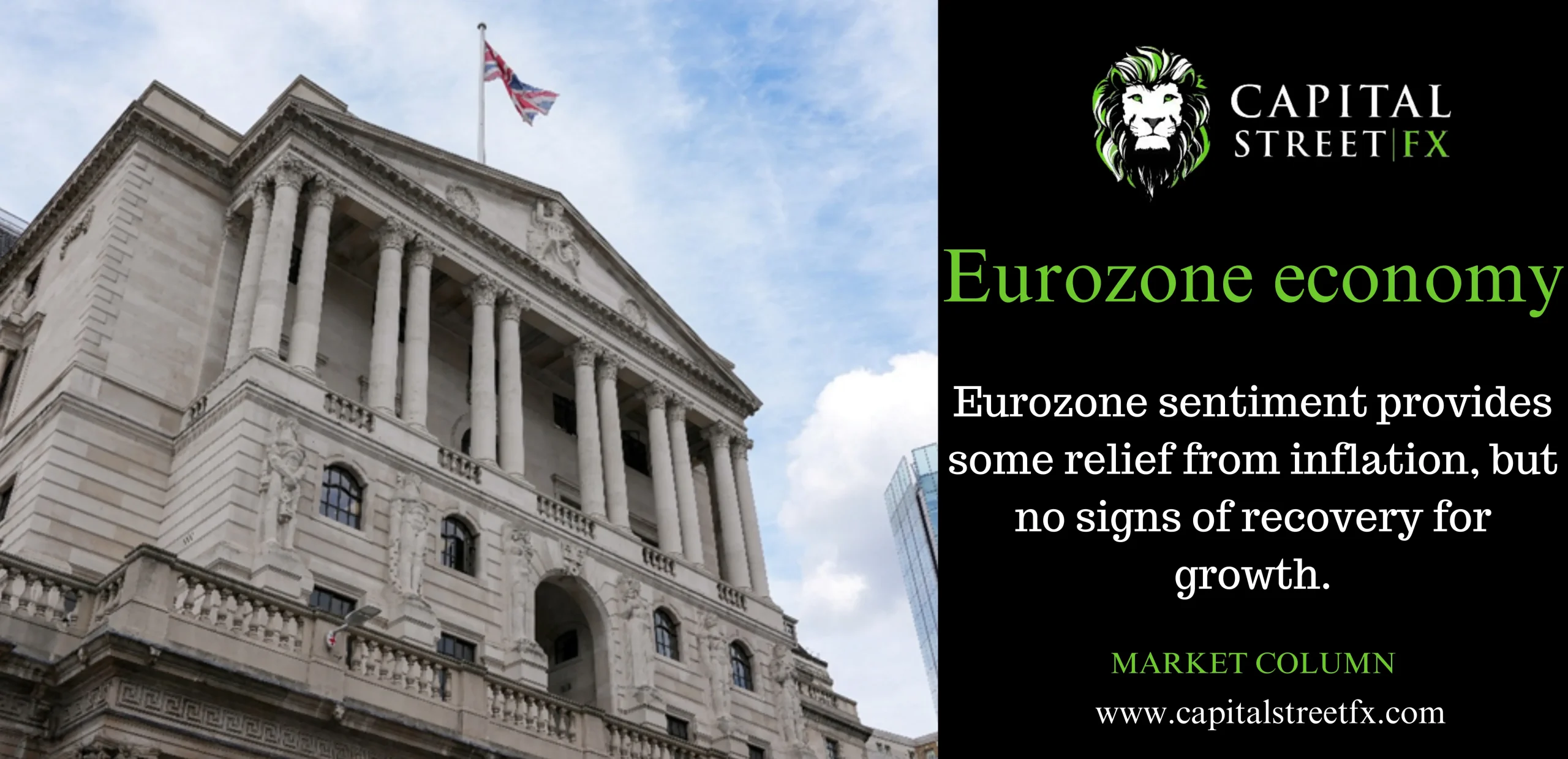Eurozone sentiment provides some relief from inflation, but no signs of recovery for growth.
In February, economic sentiment declined once more, dropping from 95.8 to 95.4. The economy continues to grapple with stagnation, particularly in the services sector. On a positive note, selling price expectations decreased, offering support for potential rate cuts later in the year.
The eurozone economy has experienced stagnation since late 2022, and surveys indicate no significant improvement in the first quarter. While the February PMI offered a glimpse of optimism for some, the European Commission.
Confidence in the industrial sector remained generally steady, shifting from -9.3 to -9.5 in February. Despite weak production expectations and indications of new orders leveling off, inventories continue to remain high.
The Services Confidence Indicator decreased from 8.6 to 6.0, reflecting a significant drop in recent demand and markedly diminished expectations for future demand. Consequently, this has led to a less optimistic outlook for employment.
The positive aspect of this subdued survey is that selling price expectations for services also decreased, providing a welcomed relief amid lingering inflation concerns. Services inflation expectations had been on the rise for four consecutive months, reaching levels typically linked to an increase in price growth. The decline in February, while not robust enough to eliminate all hawkish concerns, does indicate a halt in further acceleration.
Summing it up, the survey leans towards a dovish stance for the European Central Bank. There is limited evidence of an economic activity rebound, and positive signs are scarce at the moment. We anticipate a cautious uptick in growth as we move towards the summer. In terms of inflationary pressures, the services sector experienced milder conditions this month due to weakened demand and reduced optimism about the upcoming months. In our view, this sets the stage nicely for minor ECB rate cuts starting from June.

